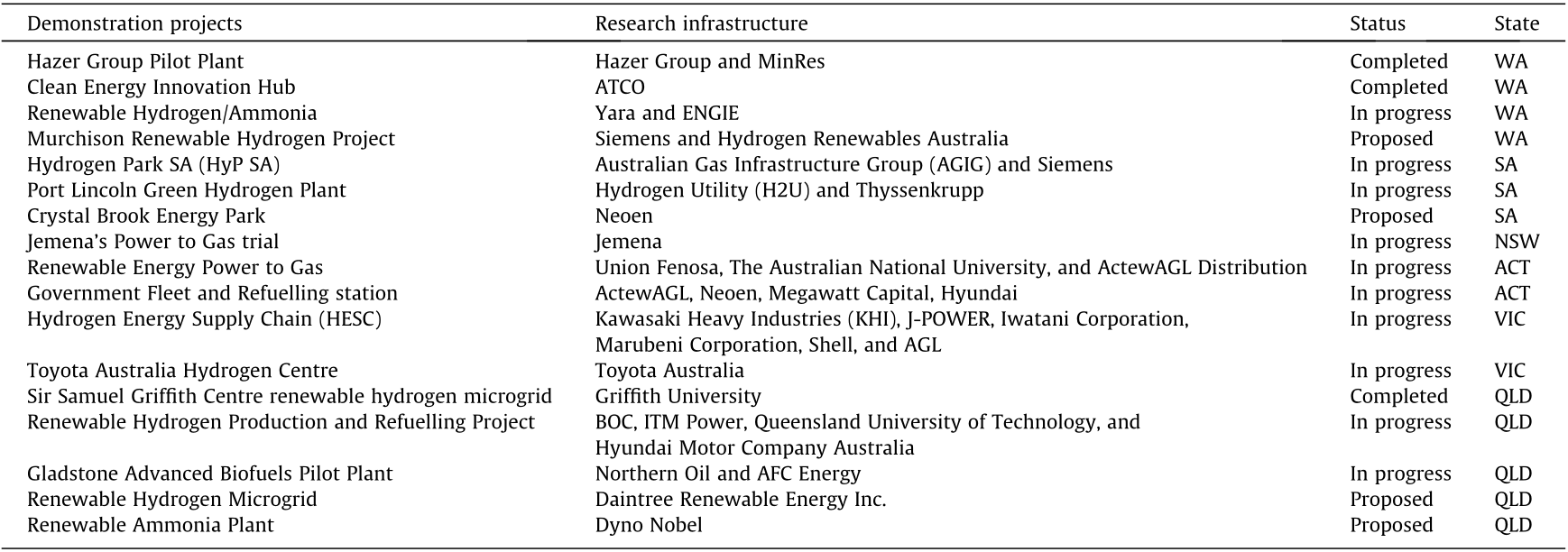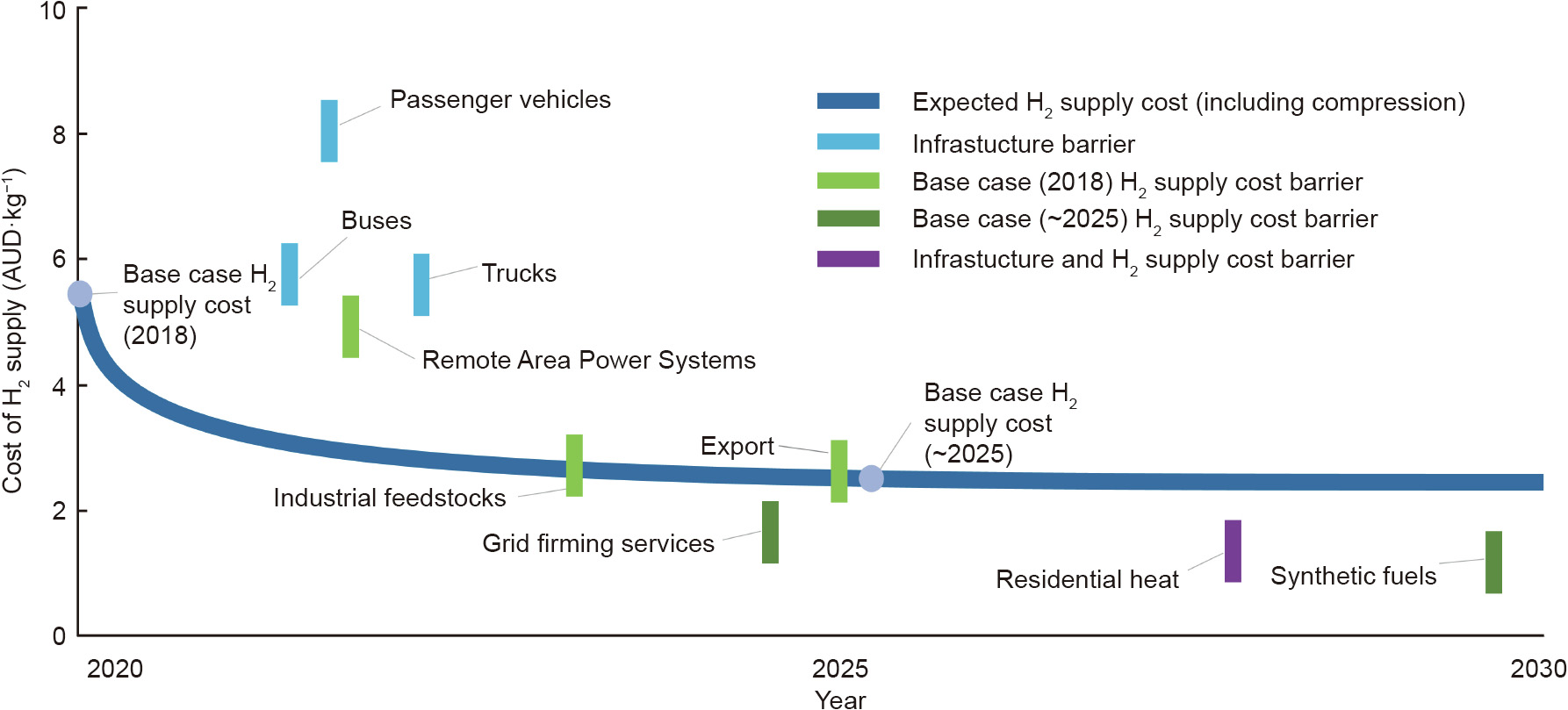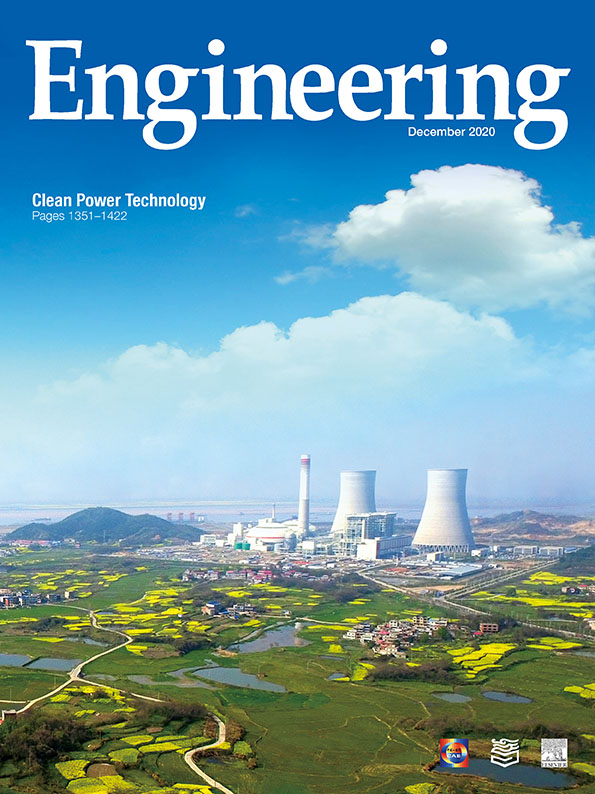《1. Introduction》
1. Introduction
As nations around the world seek to reduce carbon dioxide emissions in order to mitigate climate change risks, there has been a resurgence of interest in the use of hydrogen as a zero-emissions energy carrier. Hydrogen can be produced from diverse feedstocks via a range of low-emissions pathways and has broad potential in the process of decarbonization across the energy, transport, and industrial sectors.
With an abundance of both renewable and fossil fuel energy resources, a comparatively low national energy demand and excellent existing regional resource trading links, Australia is well positioned to pursue industrial-scale hydrogen production for both domestic and export purposes [1,2]. In this paper, we present an overview of the progress at the government, industry, and research levels currently undertaken to enable a large-scale hydrogen industry for Australia.
《2. Framework provided by government》
2. Framework provided by government
Australia’s National Hydrogen Strategy was adopted in November 2019 by state, federal, and territory governments, and sets the vision for a clean, innovative, safe, and competitive hydrogen industry that helps Australia transition to a sustainable, affordable, and low-emissions future [3]. In this vision, a commercially viable Australian hydrogen industry comprising both domestic and export value chains is achievable by 2030. The strategy builds on recent industry led hydrogen project investments in several Australian states, which have been supported by both federal and state government initiatives and informed by strategies and action plans, which have also been developed at multiple government levels.
National strategy adoption has led to specific funding commitments for hydrogen technology demonstration projects and feasibility studies from state governments and federal government agencies, such as the Australian Renewable Energy Agency (ARENA), and the facilitation of increased flows of finance into the clean energy sector through the Clean Energy Finance Corporation (CEFC).
The current focus for these investments is on delivering industry led demonstration projects that de-risk hydrogen technology deployments in Australia. Key industrial applications are in mobility, natural gas replacement in domestic and industrial heating, hydrogen as a feedstock for industrial processes, and hydrogen export value chain development. A snapshot of these demonstration projects is shown in Table 1 [4]. Projects include ATCO’s Clean Energy Innovation Hub in western Australia, in which excess renewable energy is being used to produce hydrogen which is stored either for injection into the natural gas grid or for powering a "hybrid modular home” demonstration. In South Australia, the Port Lincoln hydrogen and ammonia supply chain demonstrator shows the adoption of green hydrogen from intermittent renewable resources across multiple value chains, supplying green ammonia to the local agriculture and industry sectors while supplying power to the grid through hydrogen-fired gas turbines during periods of low wind or solar output. In the state of Victoria, meanwhile, the Hydrogen Energy Supply Chain (HESC) is a worldfirst pilot of a liquefied hydrogen export supply chain to Japan based on brown coal gasification, which utilizes carbon capture and storage to produce clean hydrogen.
《Table 1》
Table 1 Australian demonstration projects and research infrastructure. Reproduced from Ref. [4] with permission of CSIRO,©2019.

As Australia’s national science agency, the Commonwealth Scientific and Industrial Research Organisation (CSIRO) has supported hydrogen industry development, both through providing trusted scientific advice to the government and industry and through developing breakthrough technologies that can address cost barriers to hydrogen industry development.
CSIRO’s National Hydrogen Roadmap [5] considered the commercial readiness of different industrial applications for hydrogen based on the current and potential costs of hydrogen production in Australia. It concluded that many industrial applications such as mobility were already within reach based on hydrogen production cost, with market activation being the key requirement for industry development. Fig. 1 [5] demonstrates the expected reductions in the cost of hydrogen supply and the progression of target markets based on when hydrogen could be commercially competitive with alternative technologies. It also identifies where the barrier to market is infrastructure (i.e., above the hydrogen cost curve) and/or the cost of hydrogen supply (i.e., below the hydrogen cost curve).
《Fig. 1》

Fig. 1. Hydrogen competitiveness in targeted applications. Reproduced from Ref. [5] with permission of CSIRO, ©2018.
《3. Scientific and research community focus 》
3. Scientific and research community focus
Research, development, and demonstration (RD&D) of hydrogen technologies is particularly important in overcoming technological barriers during the early stages of industry development, and Australia’s National Hydrogen Strategy called for focused, intensive hydrogen-related RD&D projects so that Australia can leverage its competitive advantages [3].
A recent CSIRO study of Australia’s RD&D capabilities, opportunities, and priorities [4] concluded that Australia has a strong RD&D ecosystem that can be leveraged to address challenges across the hydrogen industry value chain and support economic development in Australia.
The study identified key technological challenges in hydrogen production, storage/distribution, and utilization, but also highlighted the critical role of cross-cutting research in areas such as environmental impacts, safety, systems modeling, and regulation/ policy.
Based on this study, and as an action under the National Hydrogen Strategy, the CSIRO is developing a Hydrogen Industry Mission with the goal of enabling RD&D partnerships between industry, government, and the research sector to scale up Australia’s domestic and export hydrogen industries. The mission will focus on RD&D efforts on fast tracking hydrogen technology development and catalyzing industrial demonstrations, particularly when associated with emerging hydrogen industry hubs. It will also seek to link Australian activities with international efforts through a "hydrogen knowledge center.”
《4. Outlook on respective roles》
4. Outlook on respective roles
Looking to the future, in late February 2020, Australia’s Energy and Emissions Reduction Minister announced an ambitious "H2 under 2” target; in other words, a goal to produce hydrogen at less than 2 AUD per kilogram. Achieving this will depend on technological improvements, but most importantly, the scale up of both supply and demand in order to realize hydrogen cost reductions through economies of scale and manufacturing improvements. These will enable existing and new applications for hydrogen to become economically viable.
Supply scaleup is the focus of the current hydrogen project funding initiative by the ARENA, which targets the commercial deployment of large-scale electrolysis (greater than 10 MW). A clear opportunity also exists to focus research and commercial investment on hydrogen utilization in order to scale demand and further drive supply cost reductions. With continued supportive government policy, industry activity and fruitful research efforts pending, Australia has the potential to break that "H2 under 2” barrier.














 京公网安备 11010502051620号
京公网安备 11010502051620号




